The BMW X5 xDrive40e has been revealed ahead of its official debut at the upcoming 2015 New York International Auto Show (2015 NYIAS). Originally presented as the BMW Concept X5 eDrive, the new crossover will now go on sale as the first non-BMW i model to feature plug-in hybrid technology.
Aesthetically, the biggest giveaway can be found just above the front fender on the left of the car, where the cover to the charging port resides. Elsewhere, it is the same story with the exception of restyled, double-spoke 18-inch wheels wrapped in 255/55 tyres.
As expected, the biggest change on the BMW X5 xDrive40e lies beneath the bodywork. A conventional 2.0 litre turbocharged, four-cylinder petrol engine with 242 hp and 350 Nm of torque is assisted by an electric motor (powered by a 9 kWh lithium-ion battery located beneath the boot floor) that produces the equivalent of 113 hp and 250 Nm. Combined, the power unit puts out 313 hp and 450 Nm of torque.
An eight-speed Steptronic automatic transmission sends the power to all four wheels via the firm’s xDrive system, irregardless of the source of propulsion. The century sprint with both power sources fully lit is achieved in 6.8 seconds while top speed is electronically limited to 210 km/h.
Of more importance is the car’s official fuel consumption figure, which is quoted at 29.4 km/l on the combined cycle. The official CO2 figures are rated at 78 g/km on the EU test cycle for plug-in hybrids while the combined electricity consumption is recorded at 15.4 kWh per 100 km.
BMW quotes a total recharge period for the lithium-ion battery to last no more than three hours and 50 minutes via a conventional household outlet. Alternatively, the total time can be trimmed to two hours and 45 minutes via the BMW i Wallbox system.
On the inside, expect more or less the same layout with a few exclusive additions. Chief of which is the inclusion of an eDrive button located down by the gear selector. By depressing it, the driver can select up to three different operating modes for the hybrid powertrain.
For starters, there’s the Auto mode which brings both the combustion engine and battery online. In this mode, all 250 Nm of torque from the electric motor is available from standstill. Onwards from that, the onboard management is responsible for balancing the workload of both power sources.
In MAX eDrive, the BMW X5 xDrive40e runs on pure electric power. Fully charged, the car has an operational range of up to 31 km and a maximum speed of 120 km/h. Finally, the aptly-named SAVE Battery mode enables the battery’s current level of charge to be maintained or replenished via means of energy recovery.
Additional hybrid-oriented features are present in the guise of “an intelligent energy management function” which works in conjunction with the navigation system. By factoring live traffic information into the preprogrammed route, the system ensures an optimal balance between both power sources – enabling the all-electric mode to be used in the most efficient part of the journey.
Elsewhere, the BMW Remote app enables the driver to monitor the level of charge as well as zero in on nearby charging stations and activate the auxiliary heating and ventilation functions. With the current-generation F15 BMW X5 already being locally-assembled, the question now is can the production process be adapted to include the assembly of this eco-friendly mammoth?
- BMW X5 xDrive 40e Exterior colour: Glacier Silver, Upolstry: Ivory White Nappa Leather, Pure Excellence Exterior Design, max. system output: 230kW/313 hp; average consumption: 3,4-3,3 Liter/100 km 15,4-15,3kWh/100km – CO2-emissions: 78 Ð 77 g/km
- BMW X5 xDrive 40e Exterior colour: Glacier Silver, Upolstry: Ivory White Nappa Leather, Pure Excellence Exterior Design, max. system output: 230kW/313 hp; average consumption: 3,4-3,3 Liter/100 km 15,4-15,3kWh/100km – CO2-emissions: 78 Ð 77 g/km
- BMW X5 xDrive 40e Exterior colour: Glacier Silver, Upolstry: Ivory White Nappa Leather, Pure Excellence Exterior Design, max. system output: 230kW/313 hp; average consumption: 3,4-3,3 Liter/100 km 15,4-15,3kWh/100km – CO2-emissions: 78 Ð 77 g/km
- BMW X5 xDrive 40e Exterior colour: Glacier Silver, Upolstry: Ivory White Nappa Leather, Pure Excellence Exterior Design, max. system output: 230kW/313 hp; average consumption: 3,4-3,3 Liter/100 km 15,4-15,3kWh/100km – CO2-emissions: 78 Ð 77 g/km
- BMW X5 xDrive 40e Exterior colour: Glacier Silver, Upolstry: Ivory White Nappa Leather, Pure Excellence Exterior Design, max. system output: 230kW/313 hp; average consumption: 3,4-3,3 Liter/100 km 15,4-15,3kWh/100km – CO2-emissions: 78 Ð 77 g/km
- BMW X5 xDrive 40e Exterior colour: Glacier Silver, Upolstry: Ivory White Nappa Leather, Pure Excellence Exterior Design, max. system output: 230kW/313 hp; average consumption: 3,4-3,3 Liter/100 km 15,4-15,3kWh/100km – CO2-emissions: 78 Ð 77 g/km
- BMW X5 xDrive 40e Exterior colour: Glacier Silver, Upolstry: Ivory White Nappa Leather, Pure Excellence Exterior Design, max. system output: 230kW/313 hp; average consumption: 3,4-3,3 Liter/100 km 15,4-15,3kWh/100km – CO2-emissions: 78 Ð 77 g/km
- BMW X5 xDrive 40e Exterior colour: Glacier Silver, Upolstry: Ivory White Nappa Leather, Pure Excellence Exterior Design, max. system output: 230kW/313 hp; average consumption: 3,4-3,3 Liter/100 km 15,4-15,3kWh/100km – CO2-emissions: 78 Ð 77 g/km
- BMW X5 xDrive 40e Exterior colour: Glacier Silver, Upolstry: Ivory White Nappa Leather, Pure Excellence Exterior Design, max. system output: 230kW/313 hp; average consumption: 3,4-3,3 Liter/100 km 15,4-15,3kWh/100km – CO2-emissions: 78 Ð 77 g/km
- BMW X5 xDrive 40e Exterior colour: Glacier Silver, Upolstry: Ivory White Nappa Leather, Pure Excellence Exterior Design, max. system output: 230kW/313 hp; average consumption: 3,4-3,3 Liter/100 km 15,4-15,3kWh/100km – CO2-emissions: 78 Ð 77 g/km
- BMW X5 xDrive 40e Exterior colour: Glacier Silver, Upolstry: Ivory White Nappa Leather, Pure Excellence Exterior Design, max. system output: 230kW/313 hp; average consumption: 3,4-3,3 Liter/100 km 15,4-15,3kWh/100km – CO2-emissions: 78 Ð 77 g/km
- BMW X5 xDrive 40e Exterior colour: Glacier Silver, Upolstry: Ivory White Nappa Leather, Pure Excellence Exterior Design, max. system output: 230kW/313 hp; average consumption: 3,4-3,3 Liter/100 km 15,4-15,3kWh/100km – CO2-emissions: 78 Ð 77 g/km
- BMW X5 xDrive 40e Exterior colour: Glacier Silver, Upolstry: Ivory White Nappa Leather, Pure Excellence Exterior Design, max. system output: 230kW/313 hp; average consumption: 3,4-3,3 Liter/100 km 15,4-15,3kWh/100km – CO2-emissions: 78 Ð 77 g/km
- BMW X5 xDrive 40e Exterior colour: Glacier Silver, Upolstry: Ivory White Nappa Leather, Pure Excellence Exterior Design, max. system output: 230kW/313 hp; average consumption: 3,4-3,3 Liter/100 km 15,4-15,3kWh/100km – CO2-emissions: 78 Ð 77 g/km
- BMW X5 xDrive 40e Exterior colour: Glacier Silver, Upolstry: Ivory White Nappa Leather, Pure Excellence Exterior Design, max. system output: 230kW/313 hp; average consumption: 3,4-3,3 Liter/100 km 15,4-15,3kWh/100km – CO2-emissions: 78 Ð 77 g/km
- BMW X5 xDrive 40e Exterior colour: Glacier Silver, Upolstry: Ivory White Nappa Leather, Pure Excellence Exterior Design, max. system output: 230kW/313 hp; average consumption: 3,4-3,3 Liter/100 km 15,4-15,3kWh/100km – CO2-emissions: 78 Ð 77 g/km
- BMW X5 xDrive 40e Exterior colour: Glacier Silver, Upolstry: Ivory White Nappa Leather, Pure Excellence Exterior Design, max. system output: 230kW/313 hp; average consumption: 3,4-3,3 Liter/100 km 15,4-15,3kWh/100km – CO2-emissions: 78 Ð 77 g/km
- BMW X5 xDrive 40e Exterior colour: Glacier Silver, Upolstry: Ivory White Nappa Leather, Pure Excellence Exterior Design, max. system output: 230kW/313 hp; average consumption: 3,4-3,3 Liter/100 km 15,4-15,3kWh/100km – CO2-emissions: 78 Ð 77 g/km
- BMW X5 xDrive 40e Exterior colour: Glacier Silver, Upolstry: Ivory White Nappa Leather, Pure Excellence Exterior Design, max. system output: 230kW/313 hp; average consumption: 3,4-3,3 Liter/100 km 15,4-15,3kWh/100km – CO2-emissions: 78 Ð 77 g/km
- BMW X5 xDrive 40e Exterior colour: Glacier Silver, Upolstry: Ivory White Nappa Leather, Pure Excellence Exterior Design, max. system output: 230kW/313 hp; average consumption: 3,4-3,3 Liter/100 km 15,4-15,3kWh/100km – CO2-emissions: 78 Ð 77 g/km
- BMW X5 xDrive 40e Exterior colour: Glacier Silver, Upolstry: Ivory White Nappa Leather, Pure Excellence Exterior Design, max. system output: 230kW/313 hp; average consumption: 3,4-3,3 Liter/100 km 15,4-15,3kWh/100km – CO2-emissions: 78 Ð 77 g/km
- BMW X5 xDrive 40e Exterior colour: Glacier Silver, Upolstry: Ivory White Nappa Leather, Pure Excellence Exterior Design, max. system output: 230kW/313 hp; average consumption: 3,4-3,3 Liter/100 km 15,4-15,3kWh/100km – CO2-emissions: 78 Ð 77 g/km
- BMW X5 xDrive 40e Exterior colour: Glacier Silver, Upolstry: Ivory White Nappa Leather, Pure Excellence Exterior Design, max. system output: 230kW/313 hp; average consumption: 3,4-3,3 Liter/100 km 15,4-15,3kWh/100km – CO2-emissions: 78 Ð 77 g/km
- BMW X5 xDrive 40e Exterior colour: Glacier Silver, Upolstry: Ivory White Nappa Leather, Pure Excellence Exterior Design, max. system output: 230kW/313 hp; average consumption: 3,4-3,3 Liter/100 km 15,4-15,3kWh/100km – CO2-emissions: 78 Ð 77 g/km
- BMW X5 xDrive 40e Exterior colour: Glacier Silver, Upolstry: Ivory White Nappa Leather, Pure Excellence Exterior Design, max. system output: 230kW/313 hp; average consumption: 3,4-3,3 Liter/100 km 15,4-15,3kWh/100km – CO2-emissions: 78 Ð 77 g/km
- BMW X5 xDrive 40e Exterior colour: Glacier Silver, Upolstry: Ivory White Nappa Leather, Pure Excellence Exterior Design, max. system output: 230kW/313 hp; average consumption: 3,4-3,3 Liter/100 km 15,4-15,3kWh/100km – CO2-emissions: 78 Ð 77 g/km
- BMW X5 xDrive 40e Exterior colour: Glacier Silver, Upolstry: Ivory White Nappa Leather, Pure Excellence Exterior Design, max. system output: 230kW/313 hp; average consumption: 3,4-3,3 Liter/100 km 15,4-15,3kWh/100km – CO2-emissions: 78 Ð 77 g/km
- BMW X5 xDrive 40e Exterior colour: Glacier Silver, Upolstry: Ivory White Nappa Leather, Pure Excellence Exterior Design, max. system output: 230kW/313 hp; average consumption: 3,4-3,3 Liter/100 km 15,4-15,3kWh/100km – CO2-emissions: 78 Ð 77 g/km
- BMW X5 xDrive 40e Exterior colour: Glacier Silver, Upolstry: Ivory White Nappa Leather, Pure Excellence Exterior Design, max. system output: 230kW/313 hp; average consumption: 3,4-3,3 Liter/100 km 15,4-15,3kWh/100km – CO2-emissions: 78 Ð 77 g/km
- BMW X5 xDrive 40e Exterior colour: Glacier Silver, Upolstry: Ivory White Nappa Leather, Pure Excellence Exterior Design, max. system output: 230kW/313 hp; average consumption: 3,4-3,3 Liter/100 km 15,4-15,3kWh/100km – CO2-emissions: 78 Ð 77 g/km
- BMW X5 xDrive 40e Exterior colour: Glacier Silver, Upolstry: Ivory White Nappa Leather, Pure Excellence Exterior Design, max. system output: 230kW/313 hp; average consumption: 3,4-3,3 Liter/100 km 15,4-15,3kWh/100km – CO2-emissions: 78 Ð 77 g/km
- BMW X5 xDrive 40e Exterior colour: Glacier Silver, Upolstry: Ivory White Nappa Leather, Pure Excellence Exterior Design, max. system output: 230kW/313 hp; average consumption: 3,4-3,3 Liter/100 km 15,4-15,3kWh/100km – CO2-emissions: 78 Ð 77 g/km
- BMW X5 xDrive 40e Exterior colour: Glacier Silver, Upolstry: Ivory White Nappa Leather, Pure Excellence Exterior Design, max. system output: 230kW/313 hp; average consumption: 3,4-3,3 Liter/100 km 15,4-15,3kWh/100km – CO2-emissions: 78 Ð 77 g/km
- BMW X5 xDrive 40e Exterior colour: Glacier Silver, Upolstry: Ivory White Nappa Leather, Pure Excellence Exterior Design, max. system output: 230kW/313 hp; average consumption: 3,4-3,3 Liter/100 km 15,4-15,3kWh/100km – CO2-emissions: 78 Ð 77 g/km
- BMW X5 xDrive 40e Exterior colour: Glacier Silver, Upolstry: Ivory White Nappa Leather, Pure Excellence Exterior Design, max. system output: 230kW/313 hp; average consumption: 3,4-3,3 Liter/100 km 15,4-15,3kWh/100km – CO2-emissions: 78 Ð 77 g/km
- BMW X5 xDrive 40e Exterior colour: Glacier Silver, Upolstry: Ivory White Nappa Leather, Pure Excellence Exterior Design, max. system output: 230kW/313 hp; average consumption: 3,4-3,3 Liter/100 km 15,4-15,3kWh/100km – CO2-emissions: 78 Ð 77 g/km
- BMW X5 xDrive 40e Exterior colour: Glacier Silver, Upolstry: Ivory White Nappa Leather, Pure Excellence Exterior Design, max. system output: 230kW/313 hp; average consumption: 3,4-3,3 Liter/100 km 15,4-15,3kWh/100km – CO2-emissions: 78 Ð 77 g/km
- BMW X5 xDrive 40e Exterior colour: Glacier Silver, Upolstry: Ivory White Nappa Leather, Pure Excellence Exterior Design, max. system output: 230kW/313 hp; average consumption: 3,4-3,3 Liter/100 km 15,4-15,3kWh/100km – CO2-emissions: 78 Ð 77 g/km
- BMW X5 xDrive 40e Exterior colour: Glacier Silver, Upolstry: Ivory White Nappa Leather, Pure Excellence Exterior Design, max. system output: 230kW/313 hp; average consumption: 3,4-3,3 Liter/100 km 15,4-15,3kWh/100km – CO2-emissions: 78 Ð 77 g/km
- BMW X5 xDrive 40e Exterior colour: Glacier Silver, Upolstry: Ivory White Nappa Leather, Pure Excellence Exterior Design, max. system output: 230kW/313 hp; average consumption: 3,4-3,3 Liter/100 km 15,4-15,3kWh/100km – CO2-emissions: 78 Ð 77 g/km
- BMW X5 xDrive 40e Exterior colour: Glacier Silver, Upolstry: Ivory White Nappa Leather, Pure Excellence Exterior Design, max. system output: 230kW/313 hp; average consumption: 3,4-3,3 Liter/100 km 15,4-15,3kWh/100km – CO2-emissions: 78 Ð 77 g/km
- BMW X5 xDrive 40e Exterior colour: Glacier Silver, Upolstry: Ivory White Nappa Leather, Pure Excellence Exterior Design, max. system output: 230kW/313 hp; average consumption: 3,4-3,3 Liter/100 km 15,4-15,3kWh/100km – CO2-emissions: 78 Ð 77 g/km
- BMW X5 xDrive 40e Exterior colour: Glacier Silver, Upolstry: Ivory White Nappa Leather, Pure Excellence Exterior Design, max. system output: 230kW/313 hp; average consumption: 3,4-3,3 Liter/100 km 15,4-15,3kWh/100km – CO2-emissions: 78 Ð 77 g/km
- BMW X5 xDrive 40e Exterior colour: Glacier Silver, Upolstry: Ivory White Nappa Leather, Pure Excellence Exterior Design, max. system output: 230kW/313 hp; average consumption: 3,4-3,3 Liter/100 km 15,4-15,3kWh/100km – CO2-emissions: 78 Ð 77 g/km
- BMW X5 xDrive 40e Exterior colour: Glacier Silver, Upolstry: Ivory White Nappa Leather, Pure Excellence Exterior Design, max. system output: 230kW/313 hp; average consumption: 3,4-3,3 Liter/100 km 15,4-15,3kWh/100km – CO2-emissions: 78 Ð 77 g/km
- BMW X5 xDrive 40e Exterior colour: Glacier Silver, Upolstry: Ivory White Nappa Leather, Pure Excellence Exterior Design, max. system output: 230kW/313 hp; average consumption: 3,4-3,3 Liter/100 km 15,4-15,3kWh/100km – CO2-emissions: 78 Ð 77 g/km
- BMW X5 xDrive 40e Exterior colour: Glacier Silver, Upolstry: Ivory White Nappa Leather, Pure Excellence Exterior Design, max. system output: 230kW/313 hp; average consumption: 3,4-3,3 Liter/100 km 15,4-15,3kWh/100km – CO2-emissions: 78 Ð 77 g/km
- BMW X5 xDrive 40e Exterior colour: Glacier Silver, Upolstry: Ivory White Nappa Leather, Pure Excellence Exterior Design, max. system output: 230kW/313 hp; average consumption: 3,4-3,3 Liter/100 km 15,4-15,3kWh/100km – CO2-emissions: 78 Ð 77 g/km
- BMW X5 xDrive 40e Exterior colour: Glacier Silver, Upolstry: Ivory White Nappa Leather, Pure Excellence Exterior Design, max. system output: 230kW/313 hp; average consumption: 3,4-3,3 Liter/100 km 15,4-15,3kWh/100km – CO2-emissions: 78 Ð 77 g/km
- BMW X5 xDrive 40e Exterior colour: Glacier Silver, Upolstry: Ivory White Nappa Leather, Pure Excellence Exterior Design, max. system output: 230kW/313 hp; average consumption: 3,4-3,3 Liter/100 km 15,4-15,3kWh/100km – CO2-emissions: 78 Ð 77 g/km
- BMW X5 xDrive 40e Exterior colour: Glacier Silver, Upolstry: Ivory White Nappa Leather, Pure Excellence Exterior Design, max. system output: 230kW/313 hp; average consumption: 3,4-3,3 Liter/100 km 15,4-15,3kWh/100km – CO2-emissions: 78 Ð 77 g/km
- BMW X5 xDrive 40e Exterior colour: Glacier Silver, Upolstry: Ivory White Nappa Leather, Pure Excellence Exterior Design, max. system output: 230kW/313 hp; average consumption: 3,4-3,3 Liter/100 km 15,4-15,3kWh/100km – CO2-emissions: 78 Ð 77 g/km
- BMW X5 xDrive 40e Exterior colour: Glacier Silver, Upolstry: Ivory White Nappa Leather, Pure Excellence Exterior Design, max. system output: 230kW/313 hp; average consumption: 3,4-3,3 Liter/100 km 15,4-15,3kWh/100km – CO2-emissions: 78 Ð 77 g/km
- BMW X5 xDrive 40e Exterior colour: Glacier Silver, Upolstry: Ivory White Nappa Leather, Pure Excellence Exterior Design, max. system output: 230kW/313 hp; average consumption: 3,4-3,3 Liter/100 km 15,4-15,3kWh/100km – CO2-emissions: 78 Ð 77 g/km
- BMW X5 xDrive 40e Exterior colour: Glacier Silver, Upolstry: Ivory White Nappa Leather, Pure Excellence Exterior Design, max. system output: 230kW/313 hp; average consumption: 3,4-3,3 Liter/100 km 15,4-15,3kWh/100km – CO2-emissions: 78 Ð 77 g/km
- BMW X5 xDrive 40e Exterior colour: Glacier Silver, Upolstry: Ivory White Nappa Leather, Pure Excellence Exterior Design, max. system output: 230kW/313 hp; average consumption: 3,4-3,3 Liter/100 km 15,4-15,3kWh/100km – CO2-emissions: 78 Ð 77 g/km
- BMW X5 xDrive 40e Exterior colour: Glacier Silver, Upolstry: Ivory White Nappa Leather, Pure Excellence Exterior Design, max. system output: 230kW/313 hp; average consumption: 3,4-3,3 Liter/100 km 15,4-15,3kWh/100km – CO2-emissions: 78 Ð 77 g/km
- BMW X5 xDrive 40e Exterior colour: Glacier Silver, Upolstry: Ivory White Nappa Leather, Pure Excellence Exterior Design, max. system output: 230kW/313 hp; average consumption: 3,4-3,3 Liter/100 km 15,4-15,3kWh/100km – CO2-emissions: 78 Ð 77 g/km
- BMW X5 xDrive 40e Exterior colour: Glacier Silver, Upolstry: Ivory White Nappa Leather, Pure Excellence Exterior Design, max. system output: 230kW/313 hp; average consumption: 3,4-3,3 Liter/100 km 15,4-15,3kWh/100km – CO2-emissions: 78 Ð 77 g/km
- BMW X5 xDrive 40e Exterior colour: Glacier Silver, Upolstry: Ivory White Nappa Leather, Pure Excellence Exterior Design, max. system output: 230kW/313 hp; average consumption: 3,4-3,3 Liter/100 km 15,4-15,3kWh/100km – CO2-emissions: 78 Ð 77 g/km
- BMW X5 xDrive 40e Exterior colour: Glacier Silver, Upolstry: Ivory White Nappa Leather, Pure Excellence Exterior Design, max. system output: 230kW/313 hp; average consumption: 3,4-3,3 Liter/100 km 15,4-15,3kWh/100km – CO2-emissions: 78 Ð 77 g/km
- BMW X5 xDrive 40e Exterior colour: Glacier Silver, Upolstry: Ivory White Nappa Leather, Pure Excellence Exterior Design, max. system output: 230kW/313 hp; average consumption: 3,4-3,3 Liter/100 km 15,4-15,3kWh/100km – CO2-emissions: 78 Ð 77 g/km
- BMW X5 xDrive 40e Exterior colour: Glacier Silver, Upolstry: Ivory White Nappa Leather, Pure Excellence Exterior Design, max. system output: 230kW/313 hp; average consumption: 3,4-3,3 Liter/100 km 15,4-15,3kWh/100km – CO2-emissions: 78 Ð 77 g/km
- BMW X5 xDrive 40e Exterior colour: Glacier Silver, Upolstry: Ivory White Nappa Leather, Pure Excellence Exterior Design, max. system output: 230kW/313 hp; average consumption: 3,4-3,3 Liter/100 km 15,4-15,3kWh/100km – CO2-emissions: 78 Ð 77 g/km
- BMW X5 xDrive 40e Exterior colour: Glacier Silver, Upolstry: Ivory White Nappa Leather, Pure Excellence Exterior Design, max. system output: 230kW/313 hp; average consumption: 3,4-3,3 Liter/100 km 15,4-15,3kWh/100km – CO2-emissions: 78 Ð 77 g/km
- BMW X5 xDrive 40e Exterior colour: Glacier Silver, Upolstry: Ivory White Nappa Leather, Pure Excellence Exterior Design, max. system output: 230kW/313 hp; average consumption: 3,4-3,3 Liter/100 km 15,4-15,3kWh/100km – CO2-emissions: 78 Ð 77 g/km
- BMW X5 xDrive 40e Exterior colour: Glacier Silver, Upolstry: Ivory White Nappa Leather, Pure Excellence Exterior Design, max. system output: 230kW/313 hp; average consumption: 3,4-3,3 Liter/100 km 15,4-15,3kWh/100km – CO2-emissions: 78 Ð 77 g/km
- BMW X5 xDrive 40e Exterior colour: Glacier Silver, Upolstry: Ivory White Nappa Leather, Pure Excellence Exterior Design, max. system output: 230kW/313 hp; average consumption: 3,4-3,3 Liter/100 km 15,4-15,3kWh/100km – CO2-emissions: 78 Ð 77 g/km
- BMW X5 xDrive 40e Exterior colour: Glacier Silver, Upolstry: Ivory White Nappa Leather, Pure Excellence Exterior Design, max. system output: 230kW/313 hp; average consumption: 3,4-3,3 Liter/100 km 15,4-15,3kWh/100km – CO2-emissions: 78 Ð 77 g/km
- BMW X5 xDrive 40e Exterior colour: Glacier Silver, Upolstry: Ivory White Nappa Leather, Pure Excellence Exterior Design, max. system output: 230kW/313 hp; average consumption: 3,4-3,3 Liter/100 km 15,4-15,3kWh/100km – CO2-emissions: 78 Ð 77 g/km
- BMW X5 xDrive 40e Exterior colour: Glacier Silver, Upolstry: Ivory White Nappa Leather, Pure Excellence Exterior Design, max. system output: 230kW/313 hp; average consumption: 3,4-3,3 Liter/100 km 15,4-15,3kWh/100km – CO2-emissions: 78 Ð 77 g/km
- BMW X5 xDrive 40e Exterior colour: Glacier Silver, Upolstry: Ivory White Nappa Leather, Pure Excellence Exterior Design, max. system output: 230kW/313 hp; average consumption: 3,4-3,3 Liter/100 km 15,4-15,3kWh/100km – CO2-emissions: 78 Ð 77 g/km
- BMW X5 xDrive 40e Exterior colour: Glacier Silver, Upolstry: Ivory White Nappa Leather, Pure Excellence Exterior Design, max. system output: 230kW/313 hp; average consumption: 3,4-3,3 Liter/100 km 15,4-15,3kWh/100km – CO2-emissions: 78 Ð 77 g/km
- BMW X5 xDrive 40e Exterior colour: Glacier Silver, Upolstry: Ivory White Nappa Leather, Pure Excellence Exterior Design, max. system output: 230kW/313 hp; average consumption: 3,4-3,3 Liter/100 km 15,4-15,3kWh/100km – CO2-emissions: 78 Ð 77 g/km
- BMW X5 xDrive 40e Exterior colour: Glacier Silver, Upolstry: Ivory White Nappa Leather, Pure Excellence Exterior Design, max. system output: 230kW/313 hp; average consumption: 3,4-3,3 Liter/100 km 15,4-15,3kWh/100km – CO2-emissions: 78 Ð 77 g/km
- BMW X5 xDrive 40e Exterior colour: Glacier Silver, Upolstry: Ivory White Nappa Leather, Pure Excellence Exterior Design, max. system output: 230kW/313 hp; average consumption: 3,4-3,3 Liter/100 km 15,4-15,3kWh/100km – CO2-emissions: 78 Ð 77 g/km
- BMW X5 xDrive 40e Exterior colour: Glacier Silver, Upolstry: Ivory White Nappa Leather, Pure Excellence Exterior Design, max. system output: 230kW/313 hp; average consumption: 3,4-3,3 Liter/100 km 15,4-15,3kWh/100km – CO2-emissions: 78 Ð 77 g/km
- BMW X5 xDrive 40e Exterior colour: Glacier Silver, Upolstry: Ivory White Nappa Leather, Pure Excellence Exterior Design, max. system output: 230kW/313 hp; average consumption: 3,4-3,3 Liter/100 km 15,4-15,3kWh/100km – CO2-emissions: 78 Ð 77 g/km
- BMW X5 xDrive 40e Exterior colour: Glacier Silver, Upolstry: Ivory White Nappa Leather, Pure Excellence Exterior Design, max. system output: 230kW/313 hp; average consumption: 3,4-3,3 Liter/100 km 15,4-15,3kWh/100km – CO2-emissions: 78 Ð 77 g/km
- BMW X5 xDrive 40e Exterior colour: Glacier Silver, Upolstry: Ivory White Nappa Leather, Pure Excellence Exterior Design, max. system output: 230kW/313 hp; average consumption: 3,4-3,3 Liter/100 km 15,4-15,3kWh/100km – CO2-emissions: 78 Ð 77 g/km
- BMW X5 xDrive 40e Exterior colour: Glacier Silver, Upolstry: Ivory White Nappa Leather, Pure Excellence Exterior Design, max. system output: 230kW/313 hp; average consumption: 3,4-3,3 Liter/100 km 15,4-15,3kWh/100km – CO2-emissions: 78 Ð 77 g/km
- BMW X5 xDrive 40e Exterior colour: Glacier Silver, Upolstry: Ivory White Nappa Leather, Pure Excellence Exterior Design, max. system output: 230kW/313 hp; average consumption: 3,4-3,3 Liter/100 km 15,4-15,3kWh/100km – CO2-emissions: 78 Ð 77 g/km
- BMW X5 xDrive 40e Exterior colour: Glacier Silver, Upolstry: Ivory White Nappa Leather, Pure Excellence Exterior Design, max. system output: 230kW/313 hp; average consumption: 3,4-3,3 Liter/100 km 15,4-15,3kWh/100km – CO2-emissions: 78 Ð 77 g/km
- BMW X5 xDrive 40e Exterior colour: Glacier Silver, Upolstry: Ivory White Nappa Leather, Pure Excellence Exterior Design, max. system output: 230kW/313 hp; average consumption: 3,4-3,3 Liter/100 km 15,4-15,3kWh/100km – CO2-emissions: 78 Ð 77 g/km
- BMW X5 xDrive 40e Exterior colour: Glacier Silver, Upolstry: Ivory White Nappa Leather, Pure Excellence Exterior Design, max. system output: 230kW/313 hp; average consumption: 3,4-3,3 Liter/100 km 15,4-15,3kWh/100km – CO2-emissions: 78 Ð 77 g/km
- BMW X5 xDrive 40e Exterior colour: Glacier Silver, Upolstry: Ivory White Nappa Leather, Pure Excellence Exterior Design, max. system output: 230kW/313 hp; average consumption: 3,4-3,3 Liter/100 km 15,4-15,3kWh/100km – CO2-emissions: 78 Ð 77 g/km
- BMW X5 xDrive 40e Exterior colour: Glacier Silver, Upolstry: Ivory White Nappa Leather, Pure Excellence Exterior Design, max. system output: 230kW/313 hp; average consumption: 3,4-3,3 Liter/100 km 15,4-15,3kWh/100km – CO2-emissions: 78 Ð 77 g/km
- BMW X5 xDrive 40e Exterior colour: Glacier Silver, Upolstry: Ivory White Nappa Leather, Pure Excellence Exterior Design, max. system output: 230kW/313 hp; average consumption: 3,4-3,3 Liter/100 km 15,4-15,3kWh/100km – CO2-emissions: 78 Ð 77 g/km
- BMW X5 xDrive 40e Exterior colour: Glacier Silver, Upolstry: Ivory White Nappa Leather, Pure Excellence Exterior Design, max. system output: 230kW/313 hp; average consumption: 3,4-3,3 Liter/100 km 15,4-15,3kWh/100km – CO2-emissions: 78 Ð 77 g/km
- BMW X5 xDrive 40e Exterior colour: Glacier Silver, Upolstry: Ivory White Nappa Leather, Pure Excellence Exterior Design, max. system output: 230kW/313 hp; average consumption: 3,4-3,3 Liter/100 km 15,4-15,3kWh/100km – CO2-emissions: 78 Ð 77 g/km
- BMW X5 xDrive 40e Exterior colour: Glacier Silver, Upolstry: Ivory White Nappa Leather, Pure Excellence Exterior Design, max. system output: 230kW/313 hp; average consumption: 3,4-3,3 Liter/100 km 15,4-15,3kWh/100km – CO2-emissions: 78 Ð 77 g/km
- BMW X5 xDrive 40e Exterior colour: Glacier Silver, Upolstry: Ivory White Nappa Leather, Pure Excellence Exterior Design, max. system output: 230kW/313 hp; average consumption: 3,4-3,3 Liter/100 km 15,4-15,3kWh/100km – CO2-emissions: 78 Ð 77 g/km
- BMW X5 xDrive 40e Exterior colour: Glacier Silver, Upolstry: Ivory White Nappa Leather, Pure Excellence Exterior Design, max. system output: 230kW/313 hp; average consumption: 3,4-3,3 Liter/100 km 15,4-15,3kWh/100km – CO2-emissions: 78 Ð 77 g/km
- BMW X5 xDrive 40e Exterior colour: Glacier Silver, Upolstry: Ivory White Nappa Leather, Pure Excellence Exterior Design, max. system output: 230kW/313 hp; average consumption: 3,4-3,3 Liter/100 km 15,4-15,3kWh/100km – CO2-emissions: 78 Ð 77 g/km
- BMW X5 xDrive 40e Exterior colour: Glacier Silver, Upolstry: Ivory White Nappa Leather, Pure Excellence Exterior Design, max. system output: 230kW/313 hp; average consumption: 3,4-3,3 Liter/100 km 15,4-15,3kWh/100km – CO2-emissions: 78 Ð 77 g/km
- BMW X5 xDrive 40e Exterior colour: Glacier Silver, Upolstry: Ivory White Nappa Leather, Pure Excellence Exterior Design, max. system output: 230kW/313 hp; average consumption: 3,4-3,3 Liter/100 km 15,4-15,3kWh/100km – CO2-emissions: 78 Ð 77 g/km
- BMW X5 xDrive 40e Exterior colour: Glacier Silver, Upolstry: Ivory White Nappa Leather, Pure Excellence Exterior Design, max. system output: 230kW/313 hp; average consumption: 3,4-3,3 Liter/100 km 15,4-15,3kWh/100km – CO2-emissions: 78 Ð 77 g/km
- BMW X5 xDrive 40e Exterior colour: Glacier Silver, Upolstry: Ivory White Nappa Leather, Pure Excellence Exterior Design, max. system output: 230kW/313 hp; average consumption: 3,4-3,3 Liter/100 km 15,4-15,3kWh/100km – CO2-emissions: 78 Ð 77 g/km
- BMW X5 xDrive 40e Exterior colour: Glacier Silver, Upolstry: Ivory White Nappa Leather, Pure Excellence Exterior Design, max. system output: 230kW/313 hp; average consumption: 3,4-3,3 Liter/100 km 15,4-15,3kWh/100km – CO2-emissions: 78 Ð 77 g/km
- BMW X5 xDrive 40e Exterior colour: Glacier Silver, Upolstry: Ivory White Nappa Leather, Pure Excellence Exterior Design, max. system output: 230kW/313 hp; average consumption: 3,4-3,3 Liter/100 km 15,4-15,3kWh/100km – CO2-emissions: 78 Ð 77 g/km
- BMW X5 xDrive 40e Exterior colour: Glacier Silver, Upolstry: Ivory White Nappa Leather, Pure Excellence Exterior Design, max. system output: 230kW/313 hp; average consumption: 3,4-3,3 Liter/100 km 15,4-15,3kWh/100km – CO2-emissions: 78 Ð 77 g/km
- BMW X5 xDrive 40e Exterior colour: Glacier Silver, Upolstry: Ivory White Nappa Leather, Pure Excellence Exterior Design, max. system output: 230kW/313 hp; average consumption: 3,4-3,3 Liter/100 km 15,4-15,3kWh/100km – CO2-emissions: 78 Ð 77 g/km
- BMW X5 xDrive 40e Exterior colour: Glacier Silver, Upolstry: Ivory White Nappa Leather, Pure Excellence Exterior Design, max. system output: 230kW/313 hp; average consumption: 3,4-3,3 Liter/100 km 15,4-15,3kWh/100km – CO2-emissions: 78 Ð 77 g/km
- BMW X5 xDrive 40e Exterior colour: Glacier Silver, Upolstry: Ivory White Nappa Leather, Pure Excellence Exterior Design, max. system output: 230kW/313 hp; average consumption: 3,4-3,3 Liter/100 km 15,4-15,3kWh/100km – CO2-emissions: 78 Ð 77 g/km
- BMW X5 xDrive 40e Exterior colour: Glacier Silver, Upolstry: Ivory White Nappa Leather, Pure Excellence Exterior Design, max. system output: 230kW/313 hp; average consumption: 3,4-3,3 Liter/100 km 15,4-15,3kWh/100km – CO2-emissions: 78 Ð 77 g/km
- BMW X5 xDrive 40e Exterior colour: Glacier Silver, Upolstry: Ivory White Nappa Leather, Pure Excellence Exterior Design, max. system output: 230kW/313 hp; average consumption: 3,4-3,3 Liter/100 km 15,4-15,3kWh/100km – CO2-emissions: 78 Ð 77 g/km
- BMW X5 xDrive 40e Exterior colour: Glacier Silver, Upolstry: Ivory White Nappa Leather, Pure Excellence Exterior Design, max. system output: 230kW/313 hp; average consumption: 3,4-3,3 Liter/100 km 15,4-15,3kWh/100km – CO2-emissions: 78 Ð 77 g/km
- BMW X5 xDrive 40e Exterior colour: Glacier Silver, Upolstry: Ivory White Nappa Leather, Pure Excellence Exterior Design, max. system output: 230kW/313 hp; average consumption: 3,4-3,3 Liter/100 km 15,4-15,3kWh/100km – CO2-emissions: 78 Ð 77 g/km
- BMW X5 xDrive 40e Exterior colour: Glacier Silver, Upolstry: Ivory White Nappa Leather, Pure Excellence Exterior Design, max. system output: 230kW/313 hp; average consumption: 3,4-3,3 Liter/100 km 15,4-15,3kWh/100km – CO2-emissions: 78 Ð 77 g/km
- BMW X5 xDrive 40e Exterior colour: Glacier Silver, Upolstry: Ivory White Nappa Leather, Pure Excellence Exterior Design, max. system output: 230kW/313 hp; average consumption: 3,4-3,3 Liter/100 km 15,4-15,3kWh/100km – CO2-emissions: 78 Ð 77 g/km
- BMW X5 xDrive 40e Exterior colour: Glacier Silver, Upolstry: Ivory White Nappa Leather, Pure Excellence Exterior Design, max. system output: 230kW/313 hp; average consumption: 3,4-3,3 Liter/100 km 15,4-15,3kWh/100km – CO2-emissions: 78 Ð 77 g/km
- BMW X5 xDrive 40e Exterior colour: Glacier Silver, Upolstry: Ivory White Nappa Leather, Pure Excellence Exterior Design, max. system output: 230kW/313 hp; average consumption: 3,4-3,3 Liter/100 km 15,4-15,3kWh/100km – CO2-emissions: 78 Ð 77 g/km
- BMW X5 xDrive 40e Exterior colour: Glacier Silver, Upolstry: Ivory White Nappa Leather, Pure Excellence Exterior Design, max. system output: 230kW/313 hp; average consumption: 3,4-3,3 Liter/100 km 15,4-15,3kWh/100km – CO2-emissions: 78 Ð 77 g/km
- BMW X5 xDrive 40e Exterior colour: Glacier Silver, Upolstry: Ivory White Nappa Leather, Pure Excellence Exterior Design, max. system output: 230kW/313 hp; average consumption: 3,4-3,3 Liter/100 km 15,4-15,3kWh/100km – CO2-emissions: 78 Ð 77 g/km
- BMW X5 xDrive 40e Exterior colour: Glacier Silver, Upolstry: Ivory White Nappa Leather, Pure Excellence Exterior Design, max. system output: 230kW/313 hp; average consumption: 3,4-3,3 Liter/100 km 15,4-15,3kWh/100km – CO2-emissions: 78 Ð 77 g/km
- BMW X5 xDrive 40e Exterior colour: Glacier Silver, Upolstry: Ivory White Nappa Leather, Pure Excellence Exterior Design, max. system output: 230kW/313 hp; average consumption: 3,4-3,3 Liter/100 km 15,4-15,3kWh/100km – CO2-emissions: 78 Ð 77 g/km
- BMW X5 xDrive 40e Exterior colour: Glacier Silver, Upolstry: Ivory White Nappa Leather, Pure Excellence Exterior Design, max. system output: 230kW/313 hp; average consumption: 3,4-3,3 Liter/100 km 15,4-15,3kWh/100km – CO2-emissions: 78 Ð 77 g/km
- BMW X5 xDrive 40e Exterior colour: Glacier Silver, Upolstry: Ivory White Nappa Leather, Pure Excellence Exterior Design, max. system output: 230kW/313 hp; average consumption: 3,4-3,3 Liter/100 km 15,4-15,3kWh/100km – CO2-emissions: 78 Ð 77 g/km
- BMW X5 xDrive 40e Exterior colour: Glacier Silver, Upolstry: Ivory White Nappa Leather, Pure Excellence Exterior Design, max. system output: 230kW/313 hp; average consumption: 3,4-3,3 Liter/100 km 15,4-15,3kWh/100km – CO2-emissions: 78 Ð 77 g/km
- BMW X5 xDrive 40e Exterior colour: Glacier Silver, Upolstry: Ivory White Nappa Leather, Pure Excellence Exterior Design, max. system output: 230kW/313 hp; average consumption: 3,4-3,3 Liter/100 km 15,4-15,3kWh/100km – CO2-emissions: 78 Ð 77 g/km
- BMW X5 xDrive 40e Exterior colour: Glacier Silver, Upolstry: Ivory White Nappa Leather, Pure Excellence Exterior Design, max. system output: 230kW/313 hp; average consumption: 3,4-3,3 Liter/100 km 15,4-15,3kWh/100km – CO2-emissions: 78 Ð 77 g/km
- BMW X5 xDrive 40e Exterior colour: Glacier Silver, Upolstry: Ivory White Nappa Leather, Pure Excellence Exterior Design, max. system output: 230kW/313 hp; average consumption: 3,4-3,3 Liter/100 km 15,4-15,3kWh/100km – CO2-emissions: 78 Ð 77 g/km
- BMW X5 xDrive 40e Exterior colour: Glacier Silver, Upolstry: Ivory White Nappa Leather, Pure Excellence Exterior Design, max. system output: 230kW/313 hp; average consumption: 3,4-3,3 Liter/100 km 15,4-15,3kWh/100km – CO2-emissions: 78 Ð 77 g/km
- BMW X5 xDrive 40e Exterior colour: Glacier Silver, Upolstry: Ivory White Nappa Leather, Pure Excellence Exterior Design, max. system output: 230kW/313 hp; average consumption: 3,4-3,3 Liter/100 km 15,4-15,3kWh/100km – CO2-emissions: 78 Ð 77 g/km
- BMW X5 xDrive 40e Exterior colour: Glacier Silver, Upolstry: Ivory White Nappa Leather, Pure Excellence Exterior Design, max. system output: 230kW/313 hp; average consumption: 3,4-3,3 Liter/100 km 15,4-15,3kWh/100km – CO2-emissions: 78 Ð 77 g/km
- BMW X5 xDrive 40e Exterior colour: Glacier Silver, Upolstry: Ivory White Nappa Leather, Pure Excellence Exterior Design, max. system output: 230kW/313 hp; average consumption: 3,4-3,3 Liter/100 km 15,4-15,3kWh/100km – CO2-emissions: 78 Ð 77 g/km
- BMW X5 xDrive 40e Exterior colour: Glacier Silver, Upolstry: Ivory White Nappa Leather, Pure Excellence Exterior Design, max. system output: 230kW/313 hp; average consumption: 3,4-3,3 Liter/100 km 15,4-15,3kWh/100km – CO2-emissions: 78 Ð 77 g/km
- BMW X5 xDrive 40e Exterior colour: Glacier Silver, Upolstry: Ivory White Nappa Leather, Pure Excellence Exterior Design, max. system output: 230kW/313 hp; average consumption: 3,4-3,3 Liter/100 km 15,4-15,3kWh/100km – CO2-emissions: 78 Ð 77 g/km
- BMW X5 xDrive 40e Exterior colour: Glacier Silver, Upolstry: Ivory White Nappa Leather, Pure Excellence Exterior Design, max. system output: 230kW/313 hp; average consumption: 3,4-3,3 Liter/100 km 15,4-15,3kWh/100km – CO2-emissions: 78 Ð 77 g/km
- BMW X5 xDrive 40e Exterior colour: Glacier Silver, Upolstry: Ivory White Nappa Leather, Pure Excellence Exterior Design, max. system output: 230kW/313 hp; average consumption: 3,4-3,3 Liter/100 km 15,4-15,3kWh/100km – CO2-emissions: 78 Ð 77 g/km
- BMW X5 xDrive 40e Exterior colour: Glacier Silver, Upolstry: Ivory White Nappa Leather, Pure Excellence Exterior Design, max. system output: 230kW/313 hp; average consumption: 3,4-3,3 Liter/100 km 15,4-15,3kWh/100km – CO2-emissions: 78 Ð 77 g/km
- BMW X5 xDrive 40e Exterior colour: Glacier Silver, Upolstry: Ivory White Nappa Leather, Pure Excellence Exterior Design, max. system output: 230kW/313 hp; average consumption: 3,4-3,3 Liter/100 km 15,4-15,3kWh/100km – CO2-emissions: 78 Ð 77 g/km
- BMW X5 xDrive 40e Exterior colour: Glacier Silver, Upolstry: Ivory White Nappa Leather, Pure Excellence Exterior Design, max. system output: 230kW/313 hp; average consumption: 3,4-3,3 Liter/100 km 15,4-15,3kWh/100km – CO2-emissions: 78 Ð 77 g/km
- BMW X5 xDrive 40e Exterior colour: Glacier Silver, Upolstry: Ivory White Nappa Leather, Pure Excellence Exterior Design, max. system output: 230kW/313 hp; average consumption: 3,4-3,3 Liter/100 km 15,4-15,3kWh/100km – CO2-emissions: 78 Ð 77 g/km
- BMW X5 xDrive 40e Exterior colour: Glacier Silver, Upolstry: Ivory White Nappa Leather, Pure Excellence Exterior Design, max. system output: 230kW/313 hp; average consumption: 3,4-3,3 Liter/100 km 15,4-15,3kWh/100km – CO2-emissions: 78 Ð 77 g/km
- BMW X5 xDrive 40e Exterior colour: Glacier Silver, Upolstry: Ivory White Nappa Leather, Pure Excellence Exterior Design, max. system output: 230kW/313 hp; average consumption: 3,4-3,3 Liter/100 km 15,4-15,3kWh/100km – CO2-emissions: 78 Ð 77 g/km
- BMW X5 xDrive 40e Exterior colour: Glacier Silver, Upolstry: Ivory White Nappa Leather, Pure Excellence Exterior Design, max. system output: 230kW/313 hp; average consumption: 3,4-3,3 Liter/100 km 15,4-15,3kWh/100km – CO2-emissions: 78 Ð 77 g/km
- BMW X5 xDrive 40e Exterior colour: Glacier Silver, Upolstry: Ivory White Nappa Leather, Pure Excellence Exterior Design, max. system output: 230kW/313 hp; average consumption: 3,4-3,3 Liter/100 km 15,4-15,3kWh/100km – CO2-emissions: 78 Ð 77 g/km
- BMW X5 xDrive 40e Exterior colour: Glacier Silver, Upolstry: Ivory White Nappa Leather, Pure Excellence Exterior Design, max. system output: 230kW/313 hp; average consumption: 3,4-3,3 Liter/100 km 15,4-15,3kWh/100km – CO2-emissions: 78 Ð 77 g/km
- BMW X5 xDrive 40e Exterior colour: Glacier Silver, Upolstry: Ivory White Nappa Leather, Pure Excellence Exterior Design, max. system output: 230kW/313 hp; average consumption: 3,4-3,3 Liter/100 km 15,4-15,3kWh/100km – CO2-emissions: 78 Ð 77 g/km
- BMW X5 xDrive 40e Exterior colour: Glacier Silver, Upolstry: Ivory White Nappa Leather, Pure Excellence Exterior Design, max. system output: 230kW/313 hp; average consumption: 3,4-3,3 Liter/100 km 15,4-15,3kWh/100km – CO2-emissions: 78 Ð 77 g/km
- BMW X5 xDrive 40e Exterior colour: Glacier Silver, Upolstry: Ivory White Nappa Leather, Pure Excellence Exterior Design, max. system output: 230kW/313 hp; average consumption: 3,4-3,3 Liter/100 km 15,4-15,3kWh/100km – CO2-emissions: 78 Ð 77 g/km
- BMW X5 xDrive 40e Exterior colour: Glacier Silver, Upolstry: Ivory White Nappa Leather, Pure Excellence Exterior Design, max. system output: 230kW/313 hp; average consumption: 3,4-3,3 Liter/100 km 15,4-15,3kWh/100km – CO2-emissions: 78 Ð 77 g/km
- BMW X5 xDrive 40e Exterior colour: Glacier Silver, Upolstry: Ivory White Nappa Leather, Pure Excellence Exterior Design, max. system output: 230kW/313 hp; average consumption: 3,4-3,3 Liter/100 km 15,4-15,3kWh/100km – CO2-emissions: 78 Ð 77 g/km
- BMW X5 xDrive 40e Exterior colour: Glacier Silver, Upolstry: Ivory White Nappa Leather, Pure Excellence Exterior Design, max. system output: 230kW/313 hp; average consumption: 3,4-3,3 Liter/100 km 15,4-15,3kWh/100km – CO2-emissions: 78 Ð 77 g/km
Looking to sell your car? Sell it with Carro.

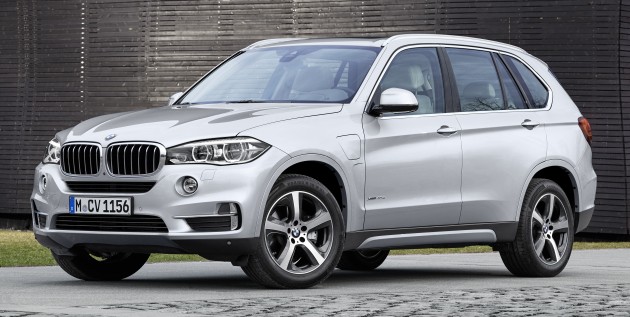
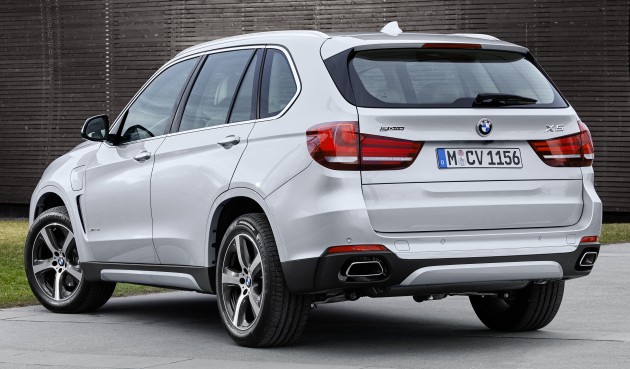
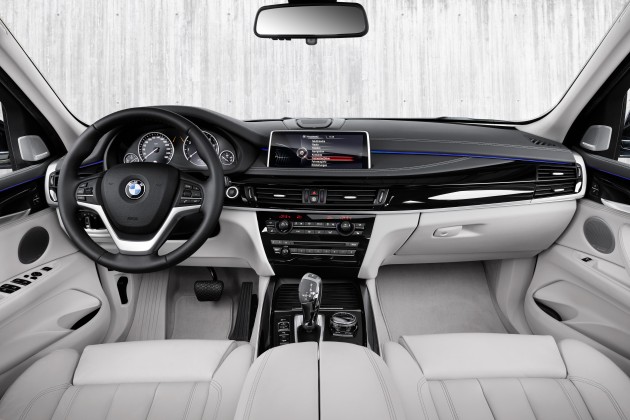


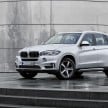
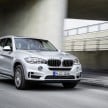
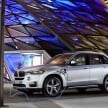
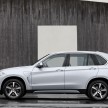
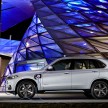
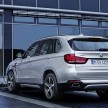
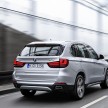
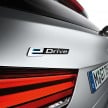
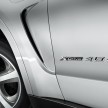
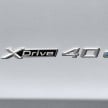
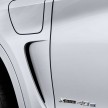
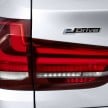
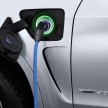
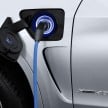
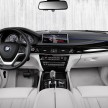
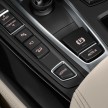
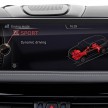
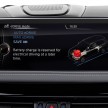
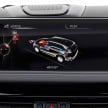
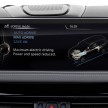
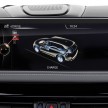
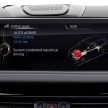
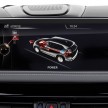
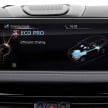
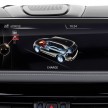
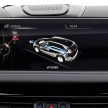
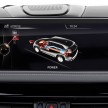
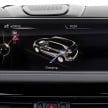

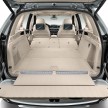
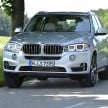
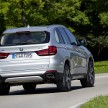
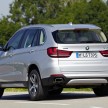
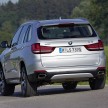
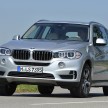
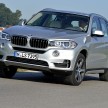
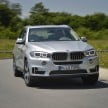
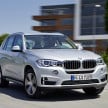
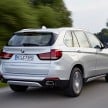
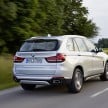
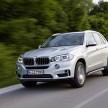
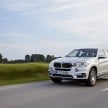
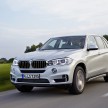
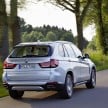
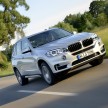
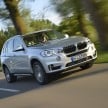
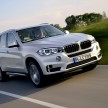
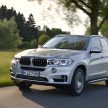
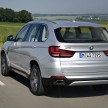
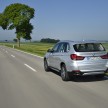

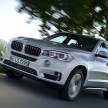
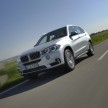
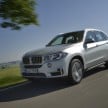
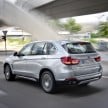
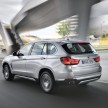
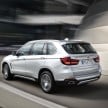
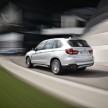
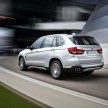
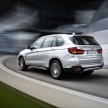
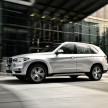
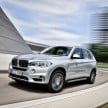
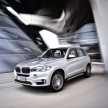
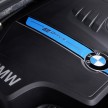
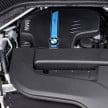
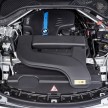
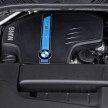
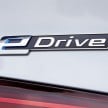
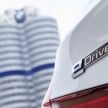
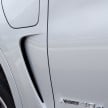
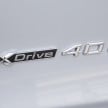
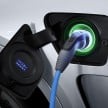
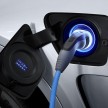
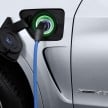
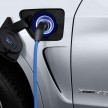
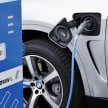
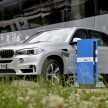
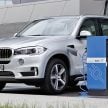
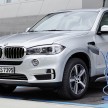
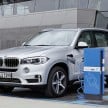
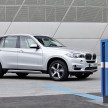
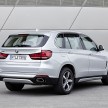
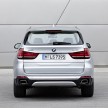
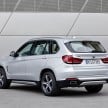
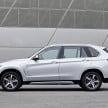
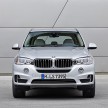
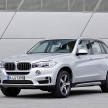
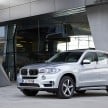
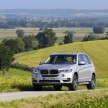
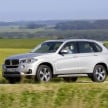
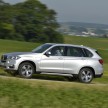

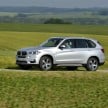
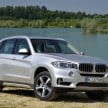
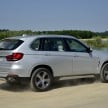
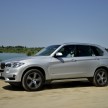
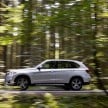
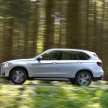
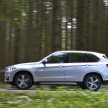
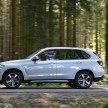
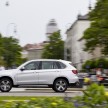
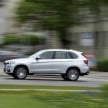
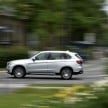
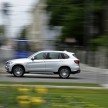
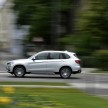
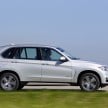
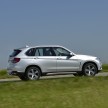





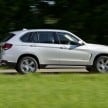
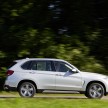
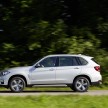
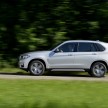
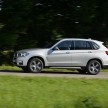


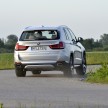
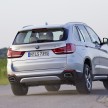
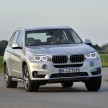
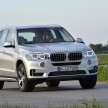
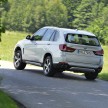

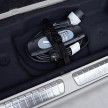
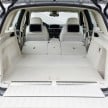
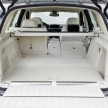
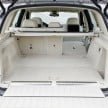
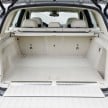
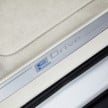
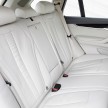
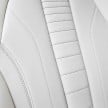
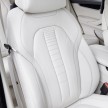
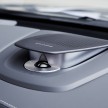

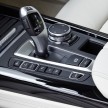
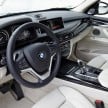
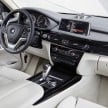
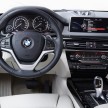
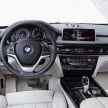
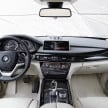
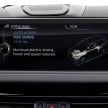
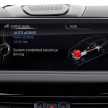
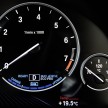
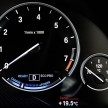
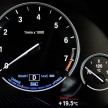
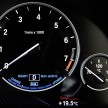
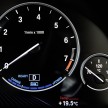
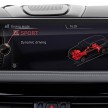
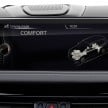
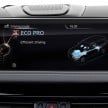
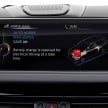
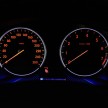
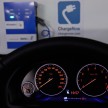
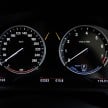
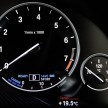
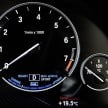
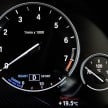
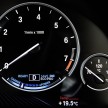
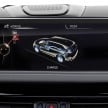
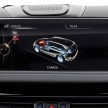
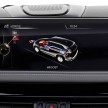
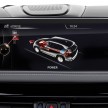
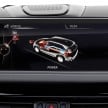
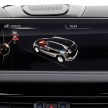
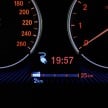
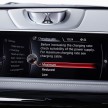
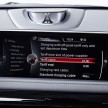
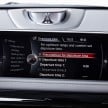
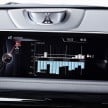
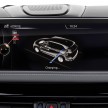
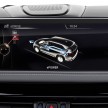
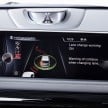
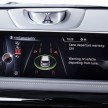
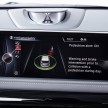
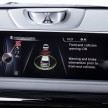
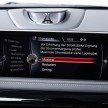
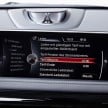
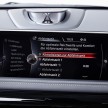







































BMW quotes a total recharge period for the lithium-ion battery to last no more than three hours and 50 minutes via a conventional household outlet. Alternatively, the total time can be trimmed to two hours and 45 minutes via the BMW i Wallbox system.
Got mistake right. Fron 2:45 to 50 mins right. Not the other way around.
It’s from 3 hours and 50 minutes to 2 hours and 45 mins bro.
BMW Drivers normally are badass drivers in Singapore.
If the vehicle will be CKD does this mean it will fall under EEV category?
Looking forward for BMW to announce
I really hope they bring it in though. There is a market, especially considering this is a 2.0l, so the excise duty is much less (75% opposed to the 105% on the 3.0 petrol and diesel we get now).
Plus, road tax would be pretty friendly too! Awaiting to see how it goes, but I can see that a lot of F10 and even F30 owners will consider it, if it is around the 400-450k mark.
Every car manufacturers r moving towards hybrid or electric car.. some even fuel cell… where is proton so call hybrid car??
With so much development and technology of electric hybrid,,which saves fuel consumption and increases the vehicle power,,do we ever thought of the repair cost,,
Do the cost of repair worth the amount saved in fuel??
How about the cost of repair for normal wear and tear,,
Do the price of car translates to the cost of fuel,,
It saves fuel, but is it really environment friendly as for electric vehicles charging still from wall sockets ..
Think,,,